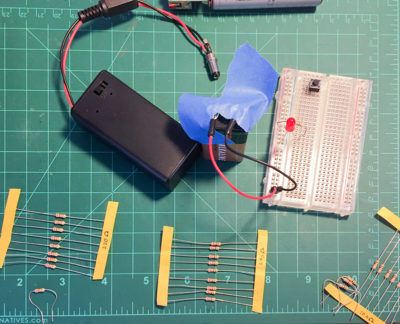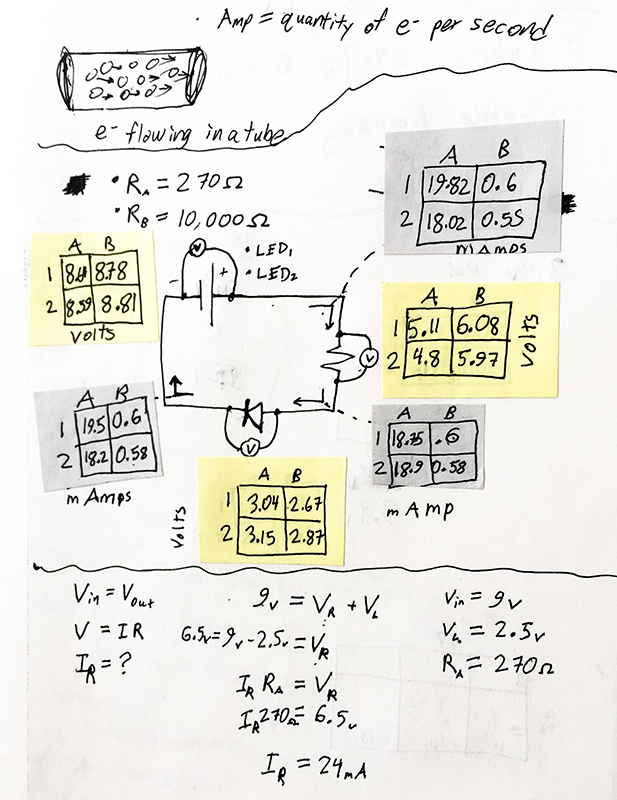As I started trying to source components for my flashlight, it became clear that I was out of my depth with the electronics. I needed to brush up on the basics of electronics from 8th grade. The battery would be supplying the electricity, I knew that much, but how much? for how long? How could I be assured that the LED would both be bright enough and not burnout? To start finding answers, I started with the basics: Voltage and Current. I struggled understanding the relationship between these two and their affect on battery capacity and light bulb brightness. Most of my projects deal with tangible things which are much easier for me to wrap my head around, so I tried a hands on approach to make current and voltage less abstract.
 I set up some LEDs, resistors, and a 9v battery to create a simple circuit. The basic formulas got me a theoretical understanding of what's happening, but I wanted to see it in action to (hopefully) understand better. My dad, an electrical engineer, sent me a little electronics kit with some basics: soldering iron, multi meter, etc. After a quick youtube on how to even use the thing, I started poking my test circuit with the probes. I had 2 LEDs of (presumably) equivalent specs, and 2 resistors of known resistance. Mixing and matching these gave me a total of 4 different scenarios. I tested both voltage and current at every position in each of the scenarios. It certainly felt exhaustive, but I do think it helped me understand the concepts a bit better.
I set up some LEDs, resistors, and a 9v battery to create a simple circuit. The basic formulas got me a theoretical understanding of what's happening, but I wanted to see it in action to (hopefully) understand better. My dad, an electrical engineer, sent me a little electronics kit with some basics: soldering iron, multi meter, etc. After a quick youtube on how to even use the thing, I started poking my test circuit with the probes. I had 2 LEDs of (presumably) equivalent specs, and 2 resistors of known resistance. Mixing and matching these gave me a total of 4 different scenarios. I tested both voltage and current at every position in each of the scenarios. It certainly felt exhaustive, but I do think it helped me understand the concepts a bit better.

I’d be surprised if the LED lit up significantly with the 10kOhm resistor.